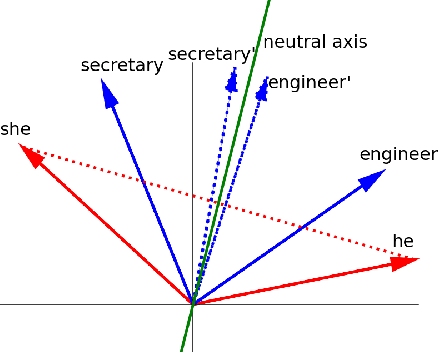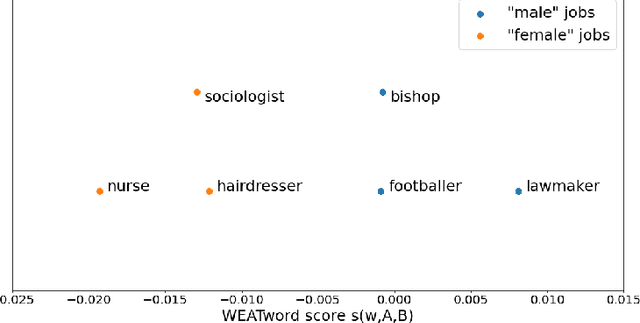The SAME score: Improved cosine based bias score for word embeddings
Paper and Code
Mar 28, 2022



Over the last years, word and sentence embeddings have established as text preprocessing for all kinds of NLP tasks and improved performances in these tasks significantly. Unfortunately, it has also been shown that these embeddings inherit various kinds of biases from the training data and thereby pass on biases present in society to NLP solutions. Many papers attempted to quantify bias in word or sentence embeddings to evaluate debiasing methods or compare different embedding models, often with cosine-based scores. However, some works have raised doubts about these scores showing that even though they report low biases, biases persist and can be shown with other tests. In fact, there is a great variety of bias scores or tests proposed in the literature without any consensus on the optimal solutions. We lack works that study the behavior of bias scores and elaborate their advantages and disadvantages. In this work, we will explore different cosine-based bias scores. We provide a bias definition based on the ideas from the literature and derive novel requirements for bias scores. Furthermore, we thoroughly investigate the existing cosine-based scores and their limitations in order to show why these scores fail to report biases in some situations. Finally, we propose a new bias score, SAME, to address the shortcomings of existing bias scores and show empirically that SAME is better suited to quantify biases in word embeddings.
 Add to Chrome
Add to Chrome Add to Firefox
Add to Firefox Add to Edge
Add to Edge